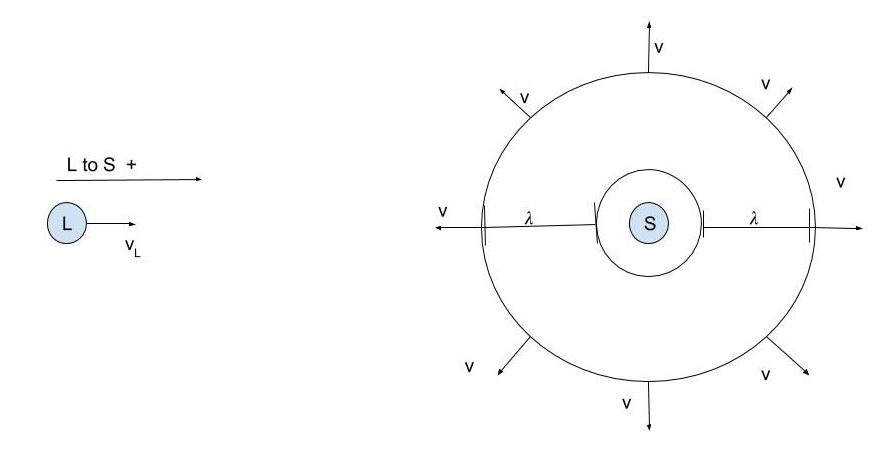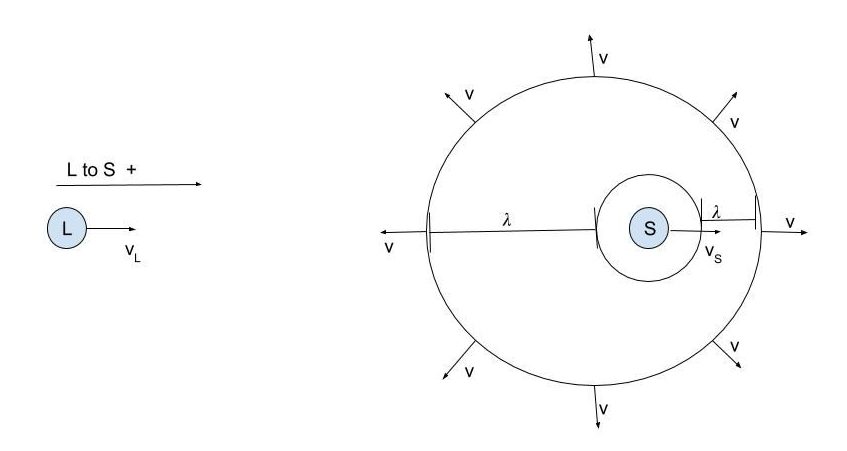Equipment:
- Doppler effect apparatus (aka speaker on string)
Demo:
Turn on the apparatus. Swing the siren overhead so that the audience hears a difference in pitch when the siren is approaching and receding.
Explanation:
The Doppler effect occurs when a source of sound and a listener are in motion relative to each other and the frequency of the sound heard is different that at the source. A similar effect can also occurs for light and radio waves. To analyze the doppler effect we will look at the relation between the frequency shift, the velocity of the listener and source.
Moving listener:
The listener L will have a velocity of towards a stationary source S. The source has a frequency of
and wavelength λ.The wavelength is the distance between successive wave crests, due to the relative displacement of source and wave.The wave crests approaching the moving listener have a speed propagation of
. The frequency the listener hears is given by the equation below:
or
So a listener moving towards a source ( and
are the same sign) hears a higher frequency and a listener moving away (
and
have opposite signs) from the source hears a lower frequency.
Moving Source and Listener:
In this case the medium is still the same, however the wavelength (λ) is no longer . In this case we add another term for the velocity of the source (
). Also the wavelength is different behind and in front of the source for this case.
(wavelength in front of moving source)
(Wavelength behind a moving source)
The waves in front of and behind the source are respectively compressed and stretched out, due to the motion of the source.
The Doppler effect for a moving source and a moving listener is given below:
Notes:
This demo uses 9V batteries
Written by Nick McCabe


